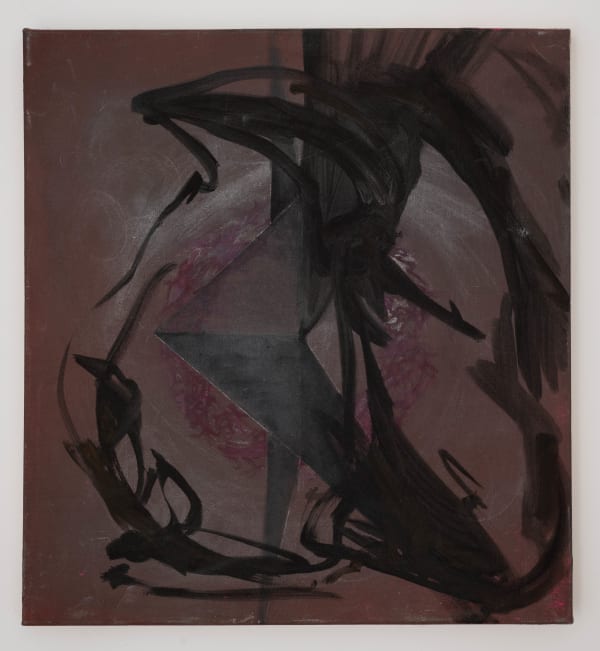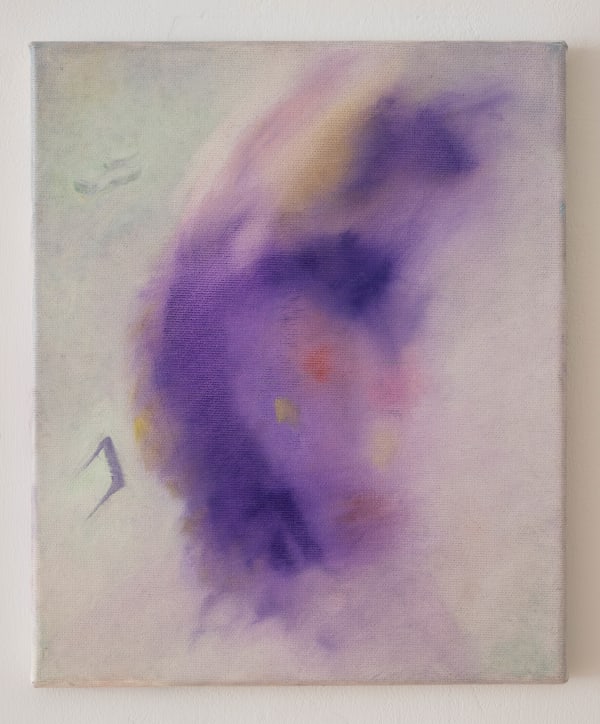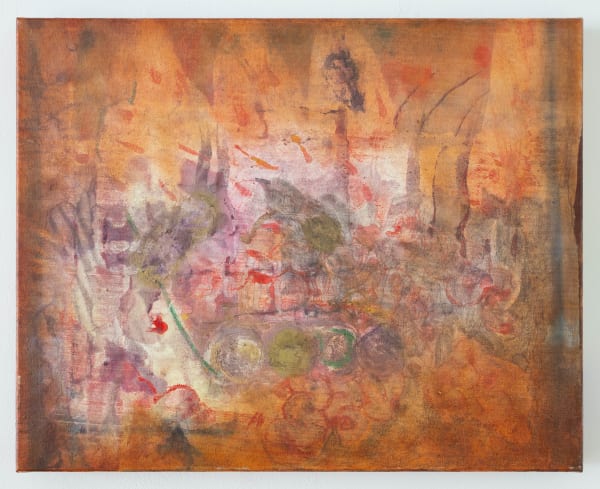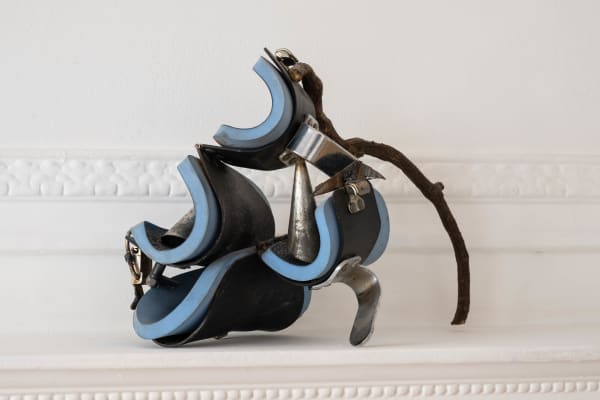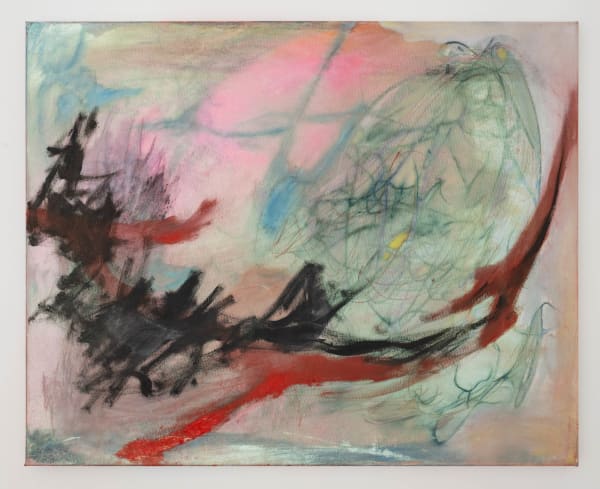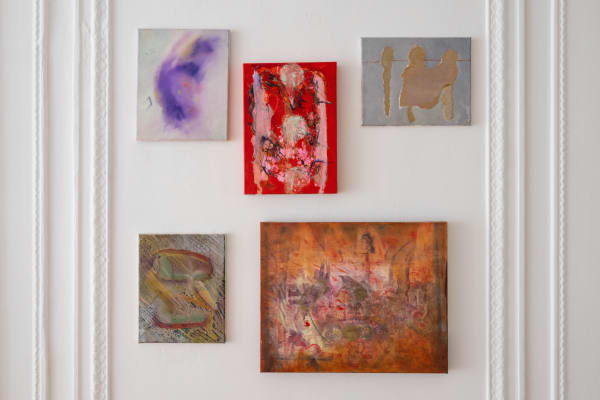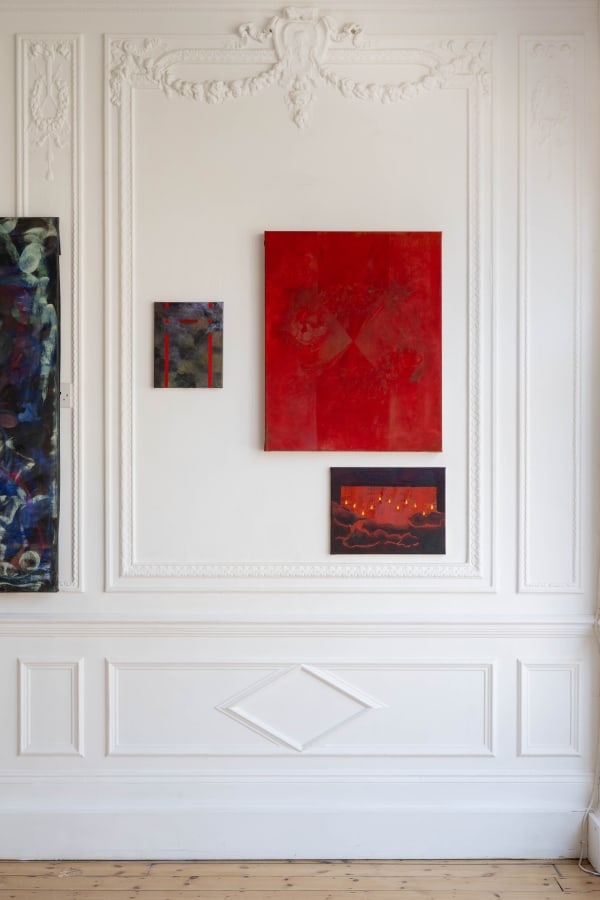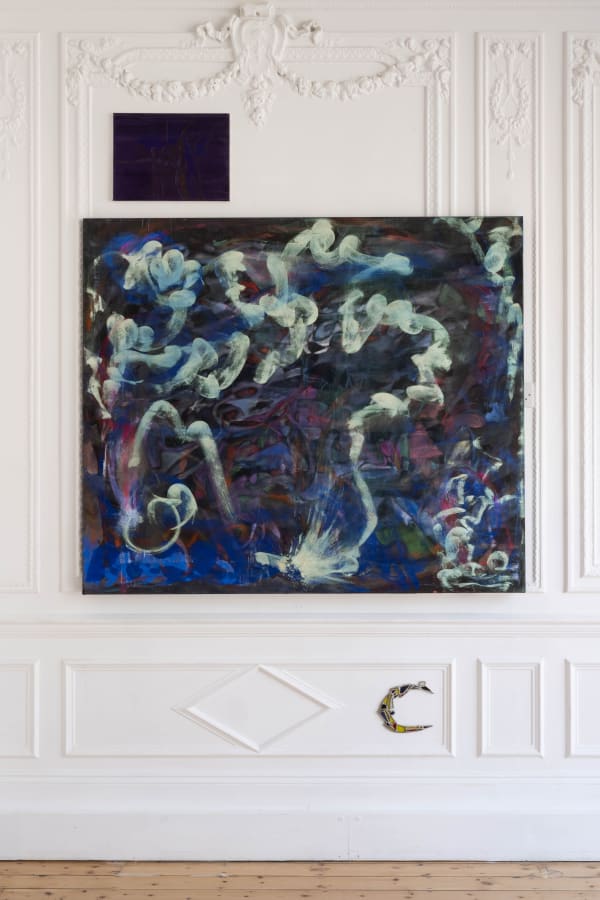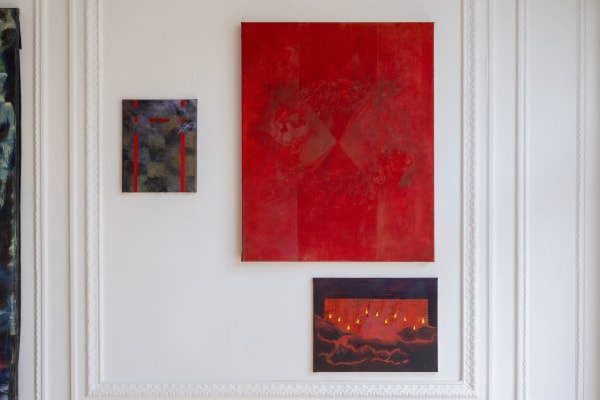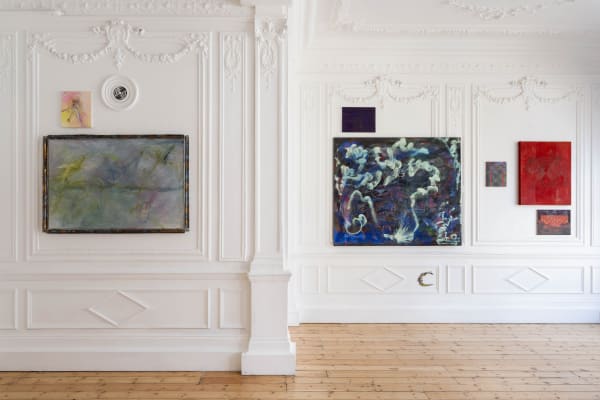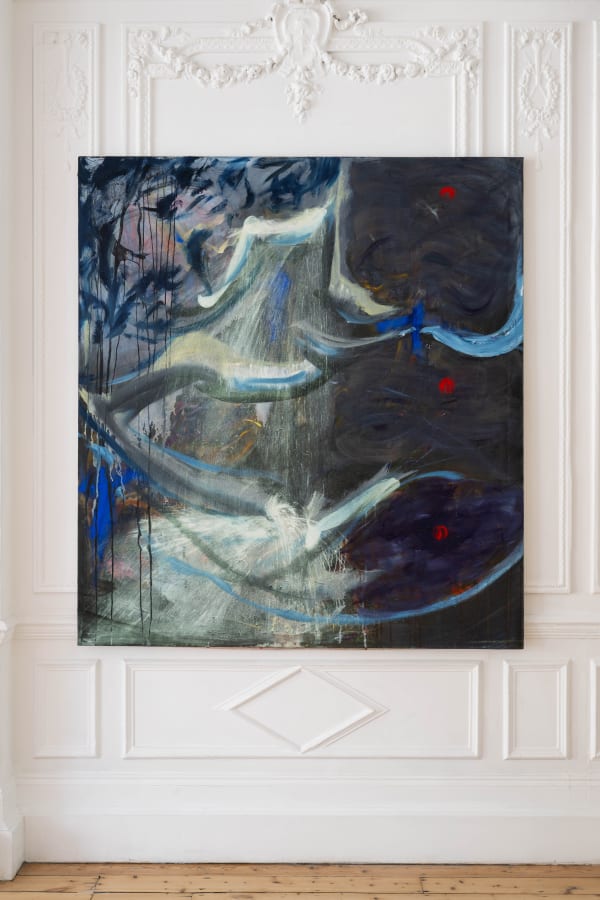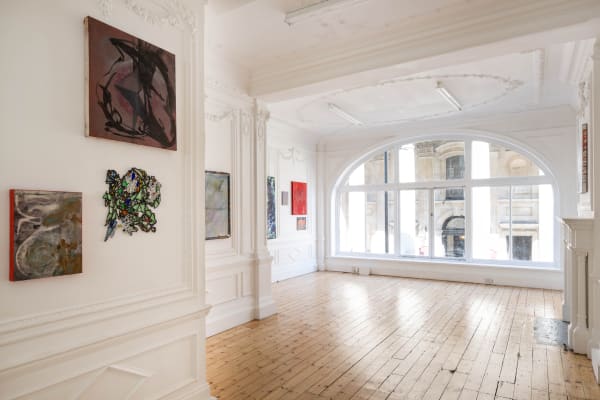Impossible Translation: Arthur Poujois
General Assembly is pleased to present Impossible Translation, a solo exhibition of painting and sculpture by Arthur Poujois. This body of work charts a creative evolution that spanned 2022 to present. During this time, the artist eschewed his previous approach to painting and adopted a looser and more contemplative approach. This period also coincided with a moment of personal transformation for Poujois, where, after a period of solitude he became immersed in Buddhist meditation and spiritual practice.
Indeed, the artist’s recent oeuvre and the development of his meditation practice are closely linked. Presence and awareness are key to the work. Each painting begins with a burst of energy release: the artist sketches a quick drawing in charcoal and graphite on raw canvas. One can look to Fast Red Dust Imprint of Four Expanding Time Zones for evidence of this, where the initial sketch peaks through the gleaming red monochrome. From there, the paintings unfold not based on a plan but from following the energetic rhythms of his own internal landscape. Whether with quick, broad strokes or sharp geometry, each painting becomes a snapshot of these rhythms.
For Poujois painting is a process of feeling, experiencing, remembering, and translating. He applies layer upon layer, working as if in a trance state, until he achieves a synthesis. The completed works often contain numerous paintings obscured in the final surface. Though not visible to the eye, they are present in the painting’s energetic weight and resonance. The paintings presented in this show invite the viewer into the artists inner landscape, offering up a tuning fork into shared resonance.
In the exhibition, Everything Began There (Pina) stands alone as the only traditionally representational painting, depicting the fleeting movement of three dancers. One of the most recent works on exhibit, it was inspired by Pina Bausch’s famed Nelken, which the artist saw at London’s Sadler’s Wells. Poujois was struck by the honest, simple gestures of Bausch’s choreography, which he saw as an expression of tremendous bravery. Unlike its accompanying works, Poujois set out intentionally to create Pina. This intention perhaps hints at the artist’s next evolution: beyond interpreting and depicting his own internal energy flows, Pina shows Poujois’ ability to recognize and translate external characteristics he wishes to integrate into both himself and his work, which are essentially indifferent to each other.


